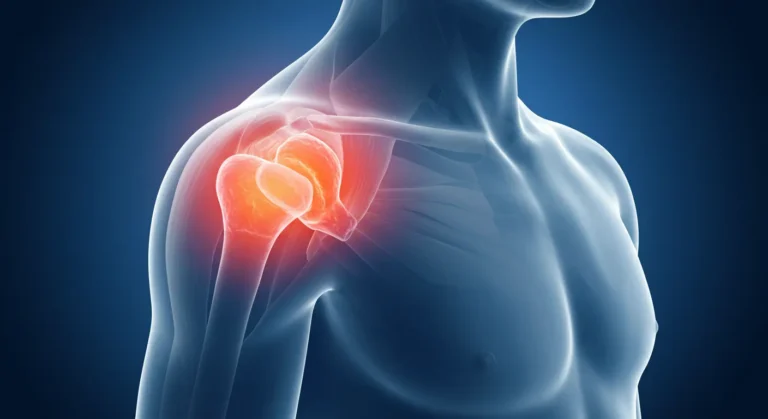Introduction to Adhesive Capsulitis Zero to Finals
Adhesive capsulitis zero to finals refers to the step-by-step process of understanding and treating frozen shoulder. Adhesive capsulitis is when the shoulder joint becomes inflamed and stiff, significantly limiting its range of motion. This article will guide you through dealing with adhesive capsulitis from the initial symptoms to full recovery, covering all the stages of treatment, prevention tips, and commonly asked questions. Whether you’re new to this topic or dealing with the condition yourself, this guide will provide everything you need to know to manage adhesive capsulitis effectively.
What is Adhesive Capsulitis?
Adhesive capsulitis, commonly called frozen shoulder, is a painful condition affecting the shoulder joint. The capsule around the shoulder thickens and tightens, restricting motion and causing pain. The condition usually develops gradually in three distinct stages:
- The freezing Phase involves increasing pain and gradual loss of range of motion.
- Frozen Phase – Pain may reduce, but stiffness persists, limiting movement.
- Thawing Phase – The shoulder slowly regains its range of motion, but recovery can take time.
Understanding the nature of adhesive capsulitis from zero to final allows you to manage the condition better and prevent long-term limitations.
Symptoms and Causes of Adhesive Capsulitis
Symptoms of adhesive capsulitis include:
- Pain in the shoulder, especially at night.
- Reduced range of motion, especially when trying to raise or rotate your arm.
- Stiffness can make everyday activities such as reaching overhead difficult.
While the exact causes of adhesive capsulitis remain unclear, several factors may contribute:
- Previous shoulder injury—If the shoulder has been immobilized for a long period after an injury, the risk of developing a frozen shoulder increases.
- Diabetes – Those with diabetes are at a higher risk of developing adhesive capsulitis.
- Inflammatory conditions – Conditions that affect the connective tissue can predispose individuals to this condition.
Understanding these factors is crucial for managing the condition from zero to finals, as it helps tailor the treatment to the individual’s needs.
Zero to Finals: Mastering the Treatment Approach
Moving from zero to finals in treating adhesive capsulitis involves a strategic approach, which includes understanding the various treatment phases. Here’s a breakdown of each stage:
1 Early Stages of Treatment (Zero to Intermediate)
In the early stages of adhesive capsulitis, the goal is to reduce pain and inflammation while preventing further stiffness. Treatment strategies include:
- Physical therapy – Gentle exercises that focus on maintaining mobility.
- NSAIDs – To alleviate pain and reduce inflammation.
- Corticosteroid injections – To manage pain and inflammation in the joint.
This stage sets the foundation for progressing through the stages of adhesive capsulitis, helping avoid long-term stiffness.
2 Intermediate Stages of Treatment (Frozen Phase)
During the frozen Phase, stiffness becomes more pronounced, and the focus shifts to improving the shoulder’s range of motion. Key approaches include:
- Manual therapy – Techniques to manipulate the joint and improve flexibility.
- More intensive physical therapy – To stretch and mobilize the shoulder capsule and prevent further restrictions.
- Heat or ice packs – These can provide relief and help increase flexibility.
Although pain may reduce in this Phase, stiffness remains a challenge that requires consistent therapy.
3 Final Stages and Full Recovery (Thawing Phase)
The shoulder gradually regains mobility in the thawing Phase, but stiffness can persist. To optimize recovery:
- Continue physical therapy – This includes dynamic strengthening exercises to rebuild shoulder function.
- At-home exercises – Regular practice of prescribed exercises can help maintain joint mobility.
- Surgical intervention – In some cases, surgery may be needed to release the shoulder capsule.
The recovery timeline for adhesive capsulitis zero to finals can vary, but full recovery is achievable with consistent effort and treatment.
Tips for Preventing Adhesive Capsulitis
Preventing adhesive capsulitis is possible with proactive care:
- Exercise regularly – Focus on shoulder exercises to maintain joint health.
- Control underlying health issues, such as diabetes, to lower the risk of a frozen shoulder.
- Avoid prolonged shoulder immobility – Keep your shoulder moving after injury or surgery to prevent stiffness.
Preventing adhesive capsulitis will make your journey from zero to finals much easier, helping you avoid long-term pain and restrictions.
Common Questions and Answers
Q: How long does it take to recover from adhesive capsulitis?
A: Recovery can take anywhere from 6 months to 2 years, depending on the severity of the condition and the treatment approach.
Q: Can adhesive capsulitis be cured?
A: Most individuals recover completely with the right treatment plan, although recovery time can vary.
Q: Are there any long-term effects of adhesive capsulitis?
A: While full recovery is common, some people may experience mild stiffness or discomfort in the shoulder after treatment.
Read More : Can You Lose a Stone in a Month? A Realistic UK Guide
Conclusion
Adhesive capsulitis zero to finals involves understanding the condition and progressively working through the treatment stages. With the right approach, you can recover from this condition, from managing early pain to increasing mobility and strength. Whether in the freezing Phase or nearing full recovery, staying committed to your treatment plan will help you regain full function and return to a pain-free life.


1 Comment
Great blog! Do you have any suggestions for aspiring writers? I’m hoping to start my own site soon but I’m a little lost on everything. Would you advise starting with a free platform like WordPress or go for a paid option? There are so many choices out there that I’m totally overwhelmed .. Any ideas? Kudos!